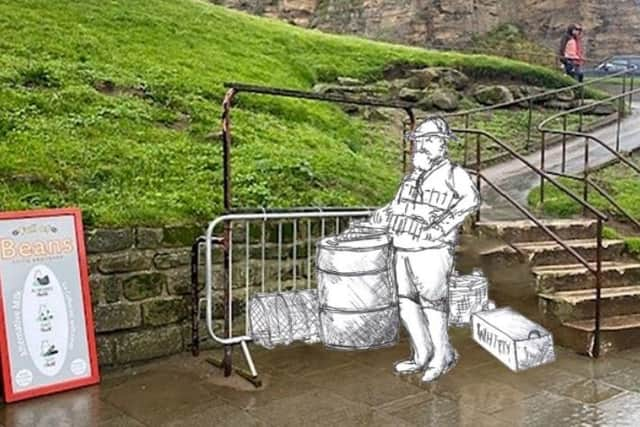Statue for Whitby lifeboat hero Henry Freeman planned for RNLI's 200th anniversary
and live on Freeview channel 276
The statue, of lifeboat disaster survivor Henry Freeman, would be built on the left side of the steps at the bottom of the town’s Khyber Pass.
Freeman was the sole survivor of an attempt by Whitby lifeboat crews to rescue vessels stricken by a huge storm in February 1861.
Advertisement
Hide AdAdvertisement
Hide AdHe was awarded an RNLI Silver Medal for the courage and determination he displayed, later becoming the Whitby RNLI Coxswain for more than 20 years.


The RNLI said that as 2024 is the organisation’s 200th anniversary, the unveiling of the sculpture next year “would be an excellent time to celebrate the town’s long history of maritime life-saving”.
The RNLI said: “We think the sculpture would be an asset to the town, enhancing the appearance of the Khyber Pass area, providing an attraction that would benefit the surrounding businesses as well as driving visitors to the RNLI museum and shop, which helps to raise money for the charity.
The galvanised wire statue would be placed and fixed to a concrete base by Emma Stothard, the artist responsible for another nine sculptures around Whitby as part of the Whitby trail.
Advertisement
Hide AdAdvertisement
Hide AdIt aims to coincide with a council plan to “make the gardens on Khyber Pass Whitby into an RNLI-themed garden”.
The application was submitted by Whitby RNLI mechanic Richard Dowson.
Proposals state that the sculpture would also incorporate a charity collection box which would be emptied on a regular basis by the local lifeboat station’s staff.
The subject of the statue, Henry Freeman, was born on April 29, 1835 in Bridlington.
According to the RNLI, he moved to Whitby in 1855 to become a fisherman and joined the local lifeboat crew.
The proposal is currently pending consideration with the council and the planning authority.